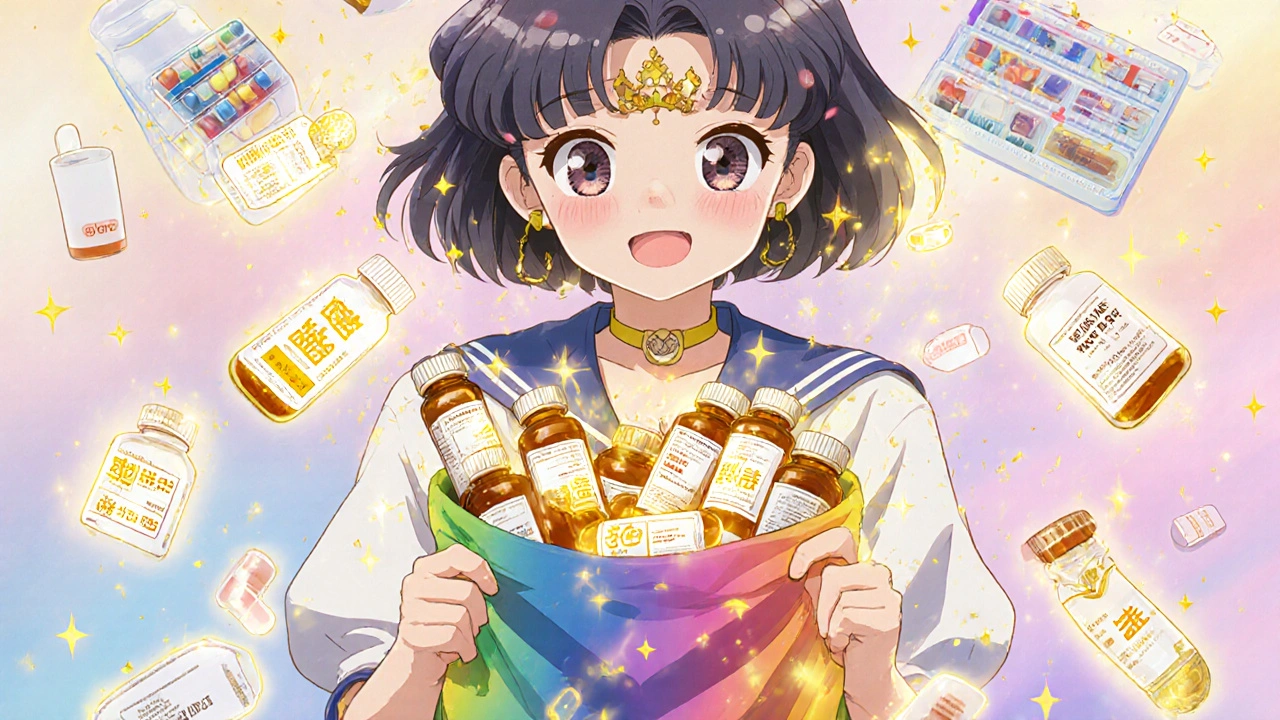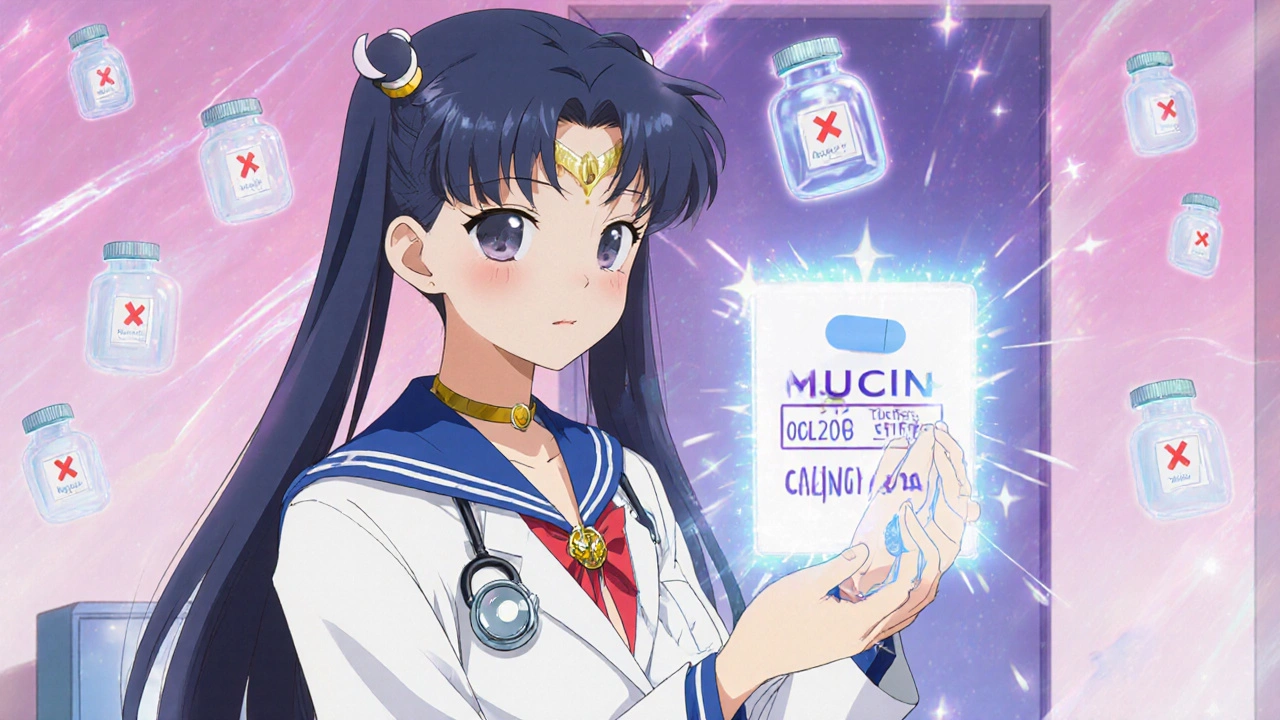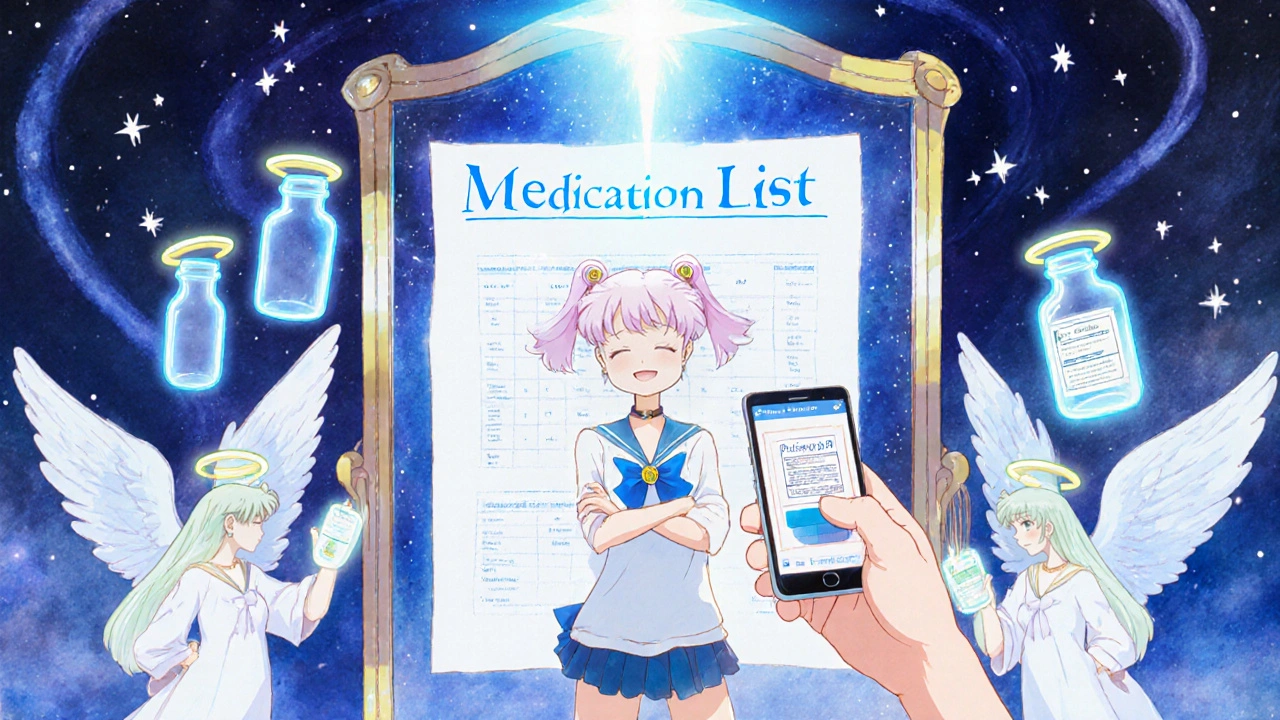How to Bring Pill Bottles to Appointments for Accurate Medication Reconciliation
 Nov, 19 2025
Nov, 19 2025
Why Bringing Pill Bottles to Your Appointment Matters
Doctors don’t just guess what you’re taking. They need to know exactly what’s in your medicine cabinet-down to the expiration date and the tiny print on the label. That’s why bringing your actual pill bottles to appointments isn’t just helpful, it’s one of the most important things you can do for your safety.
Every year, tens of thousands of hospital visits and emergency trips happen because someone took the wrong dose, mixed up two similar pills, or kept taking a drug they were told to stop. In 60 to 70% of cases, the problem starts with a mismatch between what’s written in your chart and what’s actually in your hands. The only way to fix that? Bring the bottles.
Studies show that when patients bring their real medications to appointments, medication errors drop by 67%. That’s not a small number. It means fewer side effects, fewer bad reactions, and fewer trips to the ER. Your doctor can’t reconcile your meds if they’re working from memory, a scribbled list, or a phone photo of a pill organizer filled with unlabeled capsules.
What Exactly to Bring
You don’t need to bring just your prescriptions. Bring everything. Every bottle, every box, every little packet.
- All prescription medications, even if you haven’t taken them in months
- All over-the-counter pills-pain relievers, sleep aids, heartburn meds
- Vitamins, minerals, and supplements, including fish oil, magnesium, or herbal blends
- Any patches, inhalers, eye drops, or creams you use regularly
- Even empty bottles or ones with expired labels
Why include expired or stopped meds? Because your doctor needs to know what you’ve tried, what you stopped, and why. Maybe you quit the blood pressure pill because it made you dizzy. Maybe you ran out of the antidepressant and never refilled it. Those details matter. If you throw away the bottle, that story disappears.
And don’t forget the “as needed” ones. Medications like ibuprofen, albuterol, or lorazepam are often left off lists because patients say, “I only use them sometimes.” But 29% of dangerous drug events involve these exact pills. If you’ve ever taken one in the last six months, bring it.
Why Original Containers Are Non-Negotiable
Many people transfer pills into daily pill organizers. It’s convenient. It looks neat. But it’s also dangerous for reconciliation.
A 2023 study found that 38% of patients consolidate multiple medications into single containers. That means your doctor sees a little white pill in a Monday-Tuesday box and has no idea if it’s 5 mg of lisinopril, 10 mg of metoprolol, or a generic version of a drug you stopped taking last year.
Original bottles have the FDA-mandated labels: drug name, strength, dosage instructions, pharmacy name, prescriber, lot number, and expiration date. That’s the gold standard. No app, no photo, no memory can replace that.
Even if your pill organizer is labeled perfectly, your doctor still needs to cross-check it against the original bottle. That’s why the “brown bag review”-bringing everything in one bag-is the most effective method. Clinics that use it cut reconciliation time by 38% and catch 45% more discrepancies.
What to Do If You Use a Pill Organizer
If you rely on a weekly or monthly pill organizer, you’re not alone. In fact, 77% of older adults in one study didn’t keep meds in original bottles. But that doesn’t mean you skip bringing bottles.
Here’s the right way:
- Bring your pill organizer to the appointment.
- Bring every original bottle that feeds into it.
- Let your doctor or nurse open each bottle and match the pills inside to what’s in the organizer.
This step catches mistakes like: taking two pills instead of one, mixing up similar-looking drugs, or using the wrong strength. One patient in Auckland brought her 7-day organizer and the doctor found she’d been taking twice the dose of her thyroid pill for six months-because the pharmacist accidentally refilled it with 100 mcg instead of 50 mcg. The organizer had no way of showing that.
Don’t be embarrassed if your organizer looks messy or if you’ve missed a day. Your doctor has seen it all. Their job is to fix the problem, not judge it.

What Not to Do
There are common mistakes that make reconciliation harder-or useless.
- Don’t bring loose pills. A bag of unlabeled capsules means nothing. Even if you think you know what they are, you might be wrong.
- Don’t throw away empty bottles. If you stopped a medication, keep the bottle. Take a photo of the label if you must dispose of it, but keep a copy.
- Don’t rely on your phone’s notes. “I think I take 10 mg of metoprolol once a day.” That’s not enough. The label says 25 mg. Which one is right?
- Don’t skip telehealth visits. If you’re seeing your doctor remotely, hold up each bottle to the camera. Say the name, the dose, and how often you take it. But know this: even the best video call misses 22% of discrepancies-like pills stuck in the bottom of a jar or a pill case with mismatched labels.
How to Prepare the Night Before
You don’t need to spend hours. But you do need to plan ahead.
Here’s a simple 15-minute checklist:
- Find every medicine container in your bathroom, kitchen, nightstand, purse, or car.
- Put them all in one bag-no sorting, no organizing, just gather.
- Check expiration dates. Write down any that are expired or discontinued.
- If you use a pill organizer, set it aside with the bottles.
- Take a quick photo of each label with your phone (in case you lose something).
Studies show that when patients get a reminder call the day before their appointment, compliance jumps by 47%. If your clinic doesn’t call, call them. Ask: “Do you need me to bring my pill bottles?”
It’s not your job to know if it’s “important.” Your job is to bring everything. Their job is to sort it out.
What Happens During the Appointment
When you walk in with your bag of bottles, your doctor will likely be relieved. Most clinicians spend 10-15 minutes trying to guess what’s going on. With bottles, they can do it in 5.
Here’s what typically happens:
- Your provider will lay out all the bottles and compare them to your electronic health record.
- They’ll check for duplicates: Is there a brand-name and generic version of the same drug?
- They’ll look for interactions: Could your blood pressure pill make your diabetes worse?
- They’ll spot changes: Did you stop a drug? Did you start a new one without telling anyone?
- They’ll update your list: Add, remove, or adjust doses based on what’s real, not what’s recorded.
Some clinics now use digital tools to scan barcodes on bottles and auto-fill records. But even then, the human review is critical. One nurse in Wellington said she caught a dangerous interaction between a patient’s herbal supplement and their heart medication-something the software missed because it didn’t recognize the supplement as a drug.

What to Do After the Appointment
Don’t just walk out. Make sure you leave with a clear, updated list.
- Ask for a printed copy of your final medication list.
- Confirm: “Is this everything I should be taking now?”
- Ask: “Are there any new side effects I should watch for?”
- Update your phone app or paper list at home.
- Throw away any bottles you were told to stop. But only after you’ve confirmed it with your doctor.
And if you’re still confused about what a pill is for, say so. One in five patients admit they don’t know why they’re taking half their meds. That’s not your fault-it’s a system failure. But you can fix it by asking.
Why This Still Matters in the Age of Apps and AI
There are apps that scan pills. There are smart bottles that track when you take your medicine. There are AI tools that predict drug interactions.
But none of them replace the physical bottle.
Dr. Michael A. Steinman, a leading expert in geriatric care, calls the pill bottle the “Rosetta Stone of medication reconciliation.” Why? Because it shows what’s actually in your home-not what’s in the system, not what you think you take, not what the pharmacy says you got.
AI can misidentify a generic pill. A smart bottle can’t tell you that you stopped taking a drug because it made you nauseous. An app can’t show you the 10 pills you keep in your glove compartment because you take them when you travel.
The technology is growing. But the human truth-what’s in your hands-still matters most.
Final Tip: Make It a Habit
Don’t wait for a big appointment. Bring your bottles to every check-up-even a simple flu shot visit.
Medication changes happen all the time. A new prescription from a specialist. A dose change. A drug you stopped because it cost too much. These details get lost fast.
Make it part of your routine. Before every appointment, grab the bag. Keep it by your door. Set a reminder on your phone: “Bottles for Dr. Smith.”
The goal isn’t perfection. It’s safety. One less mistake. One less hospital visit. One more year you get to feel well-because you took the right pills, at the right time, for the right reason.

Bill Camp
November 20, 2025 AT 07:47Look, I don’t care if it’s ‘evidence-based’ or some fancy study - if your doctor can’t figure out what you’re taking without seeing the damn bottle, they’re not doing their job. I’ve been to three ER visits because some nurse wrote down ‘as needed’ as ‘every 4 hours’ and I ended up with liver damage. Bring the bottles. End of story.
Lemmy Coco
November 21, 2025 AT 21:24i just brought my meds to my appt last week and my dr was like ‘wow this is the first time someone actually brought the bottles’… i felt weirdly proud? like i did something radical. also i found 3 pills i forgot i had and one was expired from 2018. yikes.
rob lafata
November 23, 2025 AT 13:28You people are so naive. You think bringing bottles is about safety? Nah. It’s about control. The pharmaceutical-industrial complex wants you dependent on their labels. They don’t want you questioning why you’re taking 17 different pills. That bottle? It’s a leash. The real issue isn’t mislabeling - it’s the entire system that convinces you you need all this junk in the first place. You’re not being safe. You’re being programmed.
And don’t get me started on ‘supplements.’ Fish oil? That’s just corporate propaganda wrapped in plastic. Your body doesn’t need it. Your doctor just wants you to keep buying.
Matthew McCraney
November 23, 2025 AT 19:59They’re watching you. Every bottle you bring? It’s logged. Every pill you take? Tracked. The government, the insurance companies, the pharmacies - they’re building a database on your body. You think they care if you live? No. They care if you’re ‘compliant.’ If you miss a dose, your premiums go up. If you take too much, they call CPS. That’s why they push this ‘bring your bottles’ nonsense - it’s surveillance dressed up as care.
I stopped taking everything after my cousin’s friend’s neighbor got flagged for ‘medication non-adherence’ and lost custody of her kids. Don’t be next.
serge jane
November 24, 2025 AT 05:53It’s interesting how we’ve come to equate safety with physical objects - the bottle, the label, the expiration date - as if truth can only be contained in plastic and ink. But what if the real problem is that we’ve outsourced our own understanding of our bodies to institutions? We don’t ask why we take something anymore. We just obey the label. The bottle becomes a totem of compliance rather than a tool of clarity. Maybe the real reconciliation isn’t between what’s written and what’s taken - but between who we were before we started taking pills and who we’ve become since.
I’m not saying don’t bring the bottles. I’m saying don’t stop there. Look at the pills. Feel the weight of them. Ask why they’re there. The label won’t tell you that.
Brianna Groleau
November 24, 2025 AT 13:30I’m from a country where people don’t even have medicine cabinets - they keep pills in a shoebox. When I moved here, I was so shocked that doctors actually *wanted* the bottles. I thought they’d just ask me and I’d say ‘oh yeah, I take that blue one every morning.’ But here? It’s like a sacred ritual. And honestly? It made me feel seen. Like my meds weren’t just ‘stuff’ - they were part of my story. I brought my grandma’s old blood pressure bottle even though it was empty - because she died last year and I still take it sometimes out of habit. My doctor didn’t judge. She just said, ‘thank you for telling me.’ That’s the kind of care we need more of.
Rusty Thomas
November 24, 2025 AT 18:26OMG I JUST REALIZED I’VE BEEN TAKING MY HUSBAND’S BLOOD PRESSURE PILLS FOR A WEEK BECAUSE THEY LOOK LIKE MINE AND I WAS TOO LAZY TO CHECK 😭😭😭 I’M SO EMBARRASSED BUT ALSO THANK YOU FOR THIS POST BECAUSE I JUST RAN TO THE BATHROOM AND FOUND THE BOTTLE AND IT WAS 25MG NOT 10MG AND I WAS TAKING TWO A DAY 😭😭😭 I’M GOING TO CALL MY DOCTOR RIGHT NOW AND I’M TELLING THEM EVERYTHING EVEN THE EXPIRED ONES AND THE PILLS IN MY CAR AND THE ONES I STOLE FROM MY NEIGHBOR’S KITCHEN WHEN I WAS STRESSED IN 2020 😅